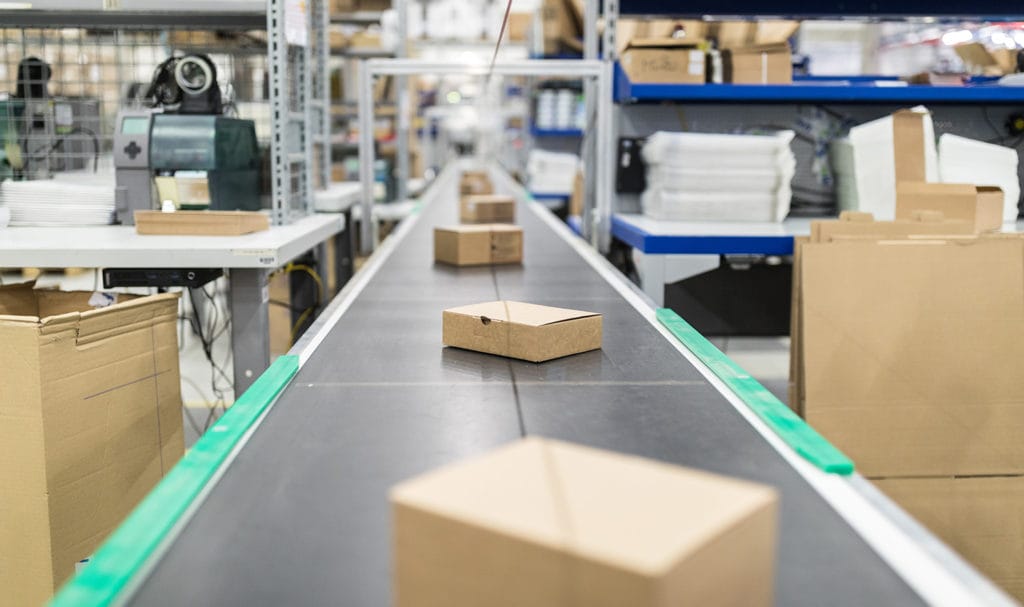Let’s first talk about what a manufacturing company is and what they do: a manufacturing company is a business that makes goods for sale.
Oftentimes companies that sell or distribute goods for sale are considered manufacturers for insurance purposes. They could make simple goods like a paperclip or something more complex, like a ship or a rocket.
Depending upon the goods being manufactured, your insurance needs can vary, however one constant is that you need Product Liability Insurance.
Product Liability Insurance
Product Liability Insurance protects businesses that sell products in the event that one of their products causes injuries or other damages to a third party. According to the National Institute of Standards and Technology (NIST), the manufacturing sector contributed over 10% of our gross domestic product in 2021. To put it in perspective, that’s over 2 TRILLION dollars.
With all of those manufacturers making billions of products, there are bound to be injuries and damages. That is why we have Manufacturers Liability Insurance—also known as Manufacturer Insurance or Insurance for Manufacturing Companies.
Manufacturers Liability Insurance
Manufacturers Liability Insurance is for any company that sells, makes, or distributes products. It protects your company if one of your products hurts someone or causes damages and you are sued.
The costs of being sued have only increased over the years, which is why it is so important to protect your business with Product Liability Insurance!

“How is Product Liability Insurance for manufacturers different from other types of businesses?”
To understand why manufacturers need Manufacturers Liability Insurance or Product Liability Insurance—why that is different from other businesses—it helps to understand there are different parts of a Commercial General Liability Policy. Each part plays an important role in protecting your business.
A Commercial General Liability policy has the following parts in something called an Insuring Agreement. The Insuring Agreement basically outlines the coverage agreement part of a policy.
- Coverage A: Bodily Injury and Property Damage Liability
- Coverage B: Personal and Advertising Injury Liability
- Coverage C: Medical Payments Liability
For our purposes, we are going to focus on Coverage A: Bodily Injury and Property Damage Liability. Within this coverage, there are two inherent risk types: risks from Product Liability and risks from Premises Liability.
Product Liability comes into play when you make, sell or distribute products like lotions, food products, or vitamins. Premises Liability comes into play when someone comes onto your premises such as a store or doctor’s office and gets hurt. Most businesses have some of both risk types but may be skewed depending on their business focus.
For instance, a company that manufactures widgets may not have very many people that come to their premises but they surely have a lot of folks that buy their products (or at least they hope they do). Conversely, an office-type business may not have that many products they sell but they have premises liability in case someone slips and falls while at their office.

“What if I only sell or distribute my products and do not make them? Do I still need Manufacturers Liability Insurance?”
Yes, you’ll likely find you need Manufacturers Liability Insurance as a distributor, retailer, or wholesaler. The reason is simple: if your business has a part in the product life cycle, you could be held liable for an injury or damage to a third party.
It is common for an injured party to file a claim against all entities involved in the product life cycle. The best way to protect your business is to get an insurance policy that includes Product Liability Insurance.

“How much does Manufacturer Insurance cost?”
The cost of Manufacturer Insurance varies from business to business. It depends on several factors, but the good news is none of them are super complicated. Let’s discuss this!
In the Product Liability Insurance world, the price of a policy is mostly determined by the classification of the goods you make, sell, or distribute. It also takes your gross sales per product type combined with the rate the insurance carrier charges per $1000 of sales.
Since there are so many different types of manufacturers and businesses out there, the industry has developed a classification system. This system assigns class codes to like businesses.
As you could imagine, there is less product liability risk for a business making post-it notes than there would be for a company making helmets. As such, we would classify these businesses and the sales from those products differently.
One of the most important factors for getting the best and most accurate pricing is proper classification. This is where having an insurance agent that is knowledgeable is so important.
Another really important factor that determines your Manufacturer Insurance cost, is your gross sales per product you sell. The basic formula for pricing insurance is:
Gross Sales / 1,000 X Rate = Premium
Gross Sales = Total Units Sold X Sales Price
Since this is such a big part of the calculation, having correct gross sales figures is really important for getting a fair and accurate price for your insurance policy.
Rate = The rate the carrier charges for that class of product
This is a very simplistic example of how the insurance industry prices risks per product type, but this will help you when you talk to your agent. They will know you have done your homework and you know what you are talking about.
Rates are different depending on the type of product you sell and the risks associated with your products. Products such as candles are much riskier than products like pens and paper, so the pricing and rates reflect those differences.
Having the information about Product Liability Insurance you learned in this article, about how insurance is classed and priced gives you and your business a leg up.

Take advantage of this newfound information and submit an online Manufacturing Insurance application in minutes today—our knowledgeable agents will surely be impressed!





